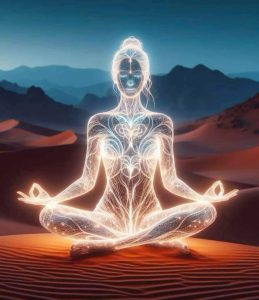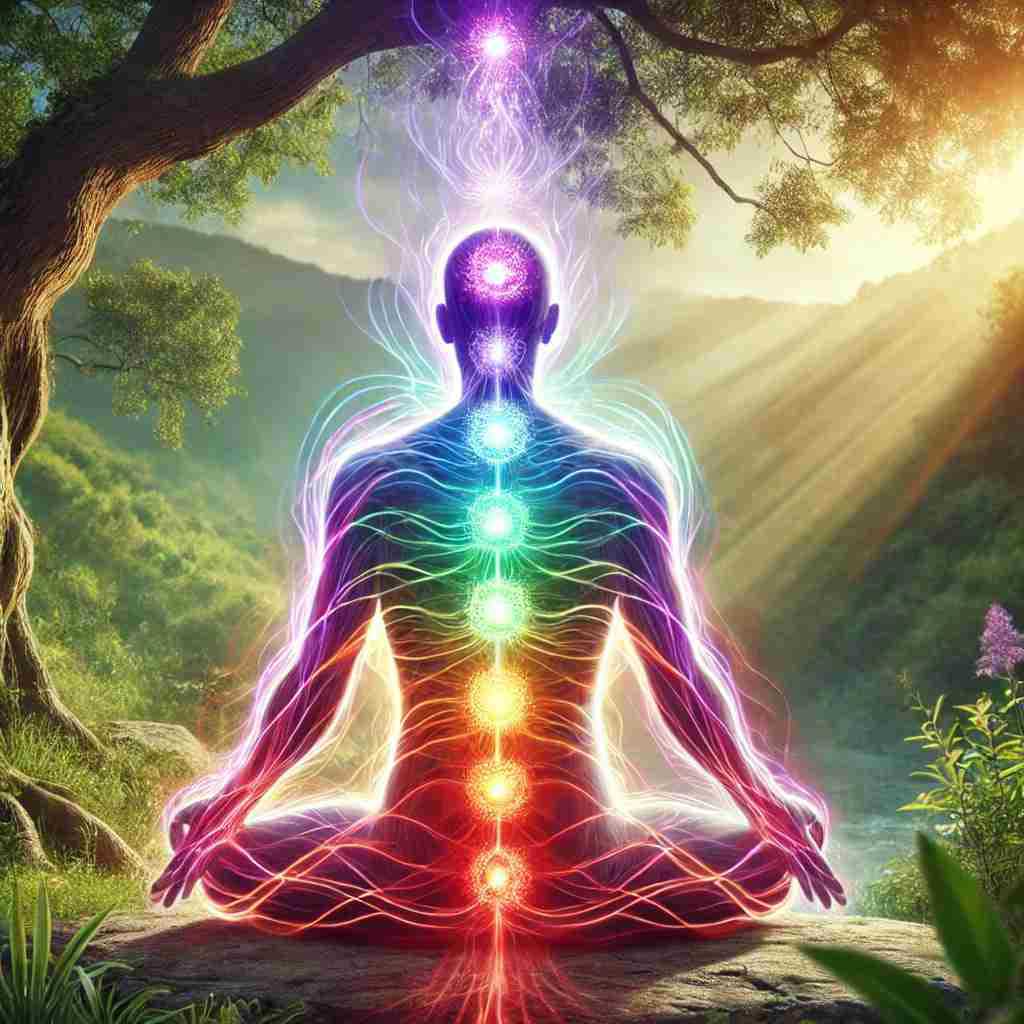What is Kundalini?
The term “Kundalini” comes from the Sanskrit word “kundal,” meaning “coiled” or “spiraled.” It is often represented as a serpent coiled at the base of the spine, symbolizing latent energy within each of us. Known as “Kundalini Shakti,” this force is considered the divine creative energy, often associated with the feminine aspect of the sacred.
When activated, Kundalini rises through the body’s energy centers (chakras), leading to heightened states of consciousness, profound transformation, and a deeper connection with the divine.
Origin and Meaning of Kundalini
The earliest mentions of Kundalini are found in ancient Indian texts, including the Upanishads and Tantras. These writings describe Kundalini as a dormant force that, when awakened, leads to spiritual enlightenment.
In yogic tradition, Kundalini is closely linked to Shiva and Shakti, the masculine and feminine principles of the universe. Shakti, the creative energy, lies dormant at the base of the spine until awakened, beginning its ascent toward Sahasrara, the crown chakra, where it unites with Shiva, representing pure consciousness. This union is perceived as the ultimate goal of yoga.

Parallels in Other Spiritual Traditions
Although Kundalini is deeply rooted in Indian spirituality, similar concepts exist in other traditions:
Holy Spirit (Christianity): In some mystical interpretations of Christianity, the Holy Spirit is seen as a divine force awakening consciousness, bringing illumination and transformation.
Qi (Chinese Taoism): Qi is a vital energy circulating through the body’s meridians, cultivated through practices like Qi Gong and Tai Chi.
Tummo (Tibetan Buddhism): Tummo is the “inner heat” generated through meditation and breath control, activating altered states of consciousness.
Sekhem (Ancient Egypt): A spiritual force associated with transformation and divine wisdom.
Orenda (Iroquois Spirituality): A mystical energy present in all things, similar to the concept of universal life force.
These parallels highlight the universality of the idea of an inner energy capable of transformation and spiritual awakening.
Methods of Awakening Kundalini
In Hinduism, several practices allow for the controlled and harmonious awakening of Kundalini:
Kundalini Yoga: Incorporating postures, breathwork (pranayama), mantras, and specific meditations.
Tantra: Energetic and meditative practices aiming for the union of Shiva and Shakti within.
Bhakti Yoga: Devotion and sacred chanting as a means of elevating consciousness.
Jnana Yoga: The study and contemplation of sacred texts to dissolve ego illusions.
Shaktipat: Activation through the transmission of energy from a master to a disciple.

Challenges and Benefits of Kundalini Awakening
The awakening of Kundalini can be a profoundly transformative experience, but it is not without challenges. Some may experience intense physical and emotional symptoms, known as “Kundalini syndrome”: insomnia, heat sensations, visions, and deep emotional shifts.
However, when properly guided, the rise of Kundalini brings numerous benefits:
Expanded awareness and a deeper perception of reality.
Inner healing of emotional wounds and traumas.
Increased connection with one’s spiritual essence.
A sense of unity and harmony with the universe.
Conclusion
Kundalini is often described as a sacred fire lying dormant within each of us, waiting to be awakened. Its journey, as described in Hinduism, is a process of profound transformation leading to union with the divine. Whether through yoga, meditation, or other spiritual practices, the key is to approach this quest with patience, respect, and discernment.
The awakening of Kundalini is not an end in itself but a path toward higher consciousness, a more aligned life, and the realization of our true nature. As the sages teach, the true essence of this sacred energy lies in preparation, devotion, and integration.



